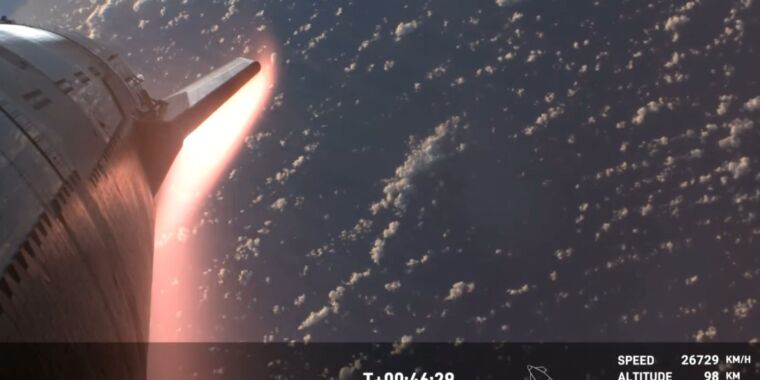Really cool stuff but I struggle to see what it truly enables to be able to deliver 100 metric tons to low earth orbit “cheaply”? A new cooler space station?
To me the real breakthrough would be in making space travel feasible. As it is now the time it takes and the radiation + small debris out there make it seem very distant.
But maybe this could be a step if they could build a space station so large that you could assemble a space ship there and launch from there with all the benefits of fuel savings that would entail? Realistically though there is no money in it until reaching the asteroid belt and mining there comes into reach. That would truly trigger a space age, if something came around that makes that feel within reach.
If we are going to go further into space, we are going to need much larger space stations that can store supplies, materials, and much more research equipment and scientists. The ISS is a fucking broom closet, lol. This is charting a path to get us closer to research stations on other planets too, which are also needed for such ventures. Mining will come eventually, after orbital stations and lunar research facilities :)
Technologies like skyhooks could help us cut costs significantly with spacetravel between planets or for shipping materials around.
There potentially is money in lunar mining, like rare earth minerals and helium-3. A lot of the current lunar mapping missions have been done to look for valuable deposits.
It is also likely that the Moon would become a manufacturing center for spacecraft given the lower gravity well. You could even potentially build a space elevator on the far side of the moon and use it as a sling to throw spacecraft into outer space or build a rail gun.
Exactly. We need The Belt. Sa-sa ke?
The entire point of investing in space is to make rich people richer quicker with government money.
Space travel is extremely expensive and provides nothing for average people. It’s a win-win for the ruling class because they get to make money hand over fist while the lives of ordinary people stagnate and deteriorate.
Useful idiots will disagree with me, though.
0/10 no aerospike engines or 20 solid fuel rockets duct taped together
Starship is what you get when you invest tens and tens of billions into spacetravel with no expectation of profit or scientific gain.
It’s pretty amazing, but I’m really hoping development will be finished before all the investors realize there is really no way to earn money from it. Starlink was an amazing scheme to extend the lifespan, so I’m sort of hoping there will be another trick to get more venture capital to burn.
It’s actually quite good metaphor for scientific progress in general, since it can only work for as long as state will pour money into that. There is no quick profit or even no longterm but certain profit to be made out of there as of yet and most likely not for a loooong time.
And if the entirety of science fiction agrees on anything and should teach us something is that letting capitalism in space is very bad idea.
Their biggest investor, Nasa, already knows
Yeah, probably why they have a second lunar lander contract to Blue Origin.
Reminds me of when the internet became a thing and people were saying, there’s no way to make money from this.
Uhh, it was literally illegal to do commerce on the Internet until the mid 1990s. They changed the law in 1996 I think.
🤡
This is the best summary I could come up with:
The moment of true amazement came about 45 minutes into the flight, as Starship descended an altitude of 100 km and began entering a thicker atmosphere.
It’s one thing to know about the perils of plasma and compression as a spacecraft falls back to Earth at 27,000 km/hour into thickening air.
For the last 40 years, NASA has used a small constellation of Tracking and Data Relay Satellites to communicate with spacecraft, beginning with the Space Shuttle.
Today, we’re seeing this promised future as some Falcon rockets fly 20 times, and SpaceX is likely to approach a truly unprecedented 150 launches this year.
This high launch cadence enabled Starlink, through which SpaceX has delivered high-speed broadband around the world and in space.
No longer will we need to worry so much about mass or volume, which have been tyrannical overlords to mission planners since the inception of spaceflight nearly seven decades ago.
The original article contains 619 words, the summary contains 152 words. Saved 75%. I’m a bot and I’m open source!
The SLS is more impressive for me, more modular albeit less renewable. Like a modern Saturn V.






